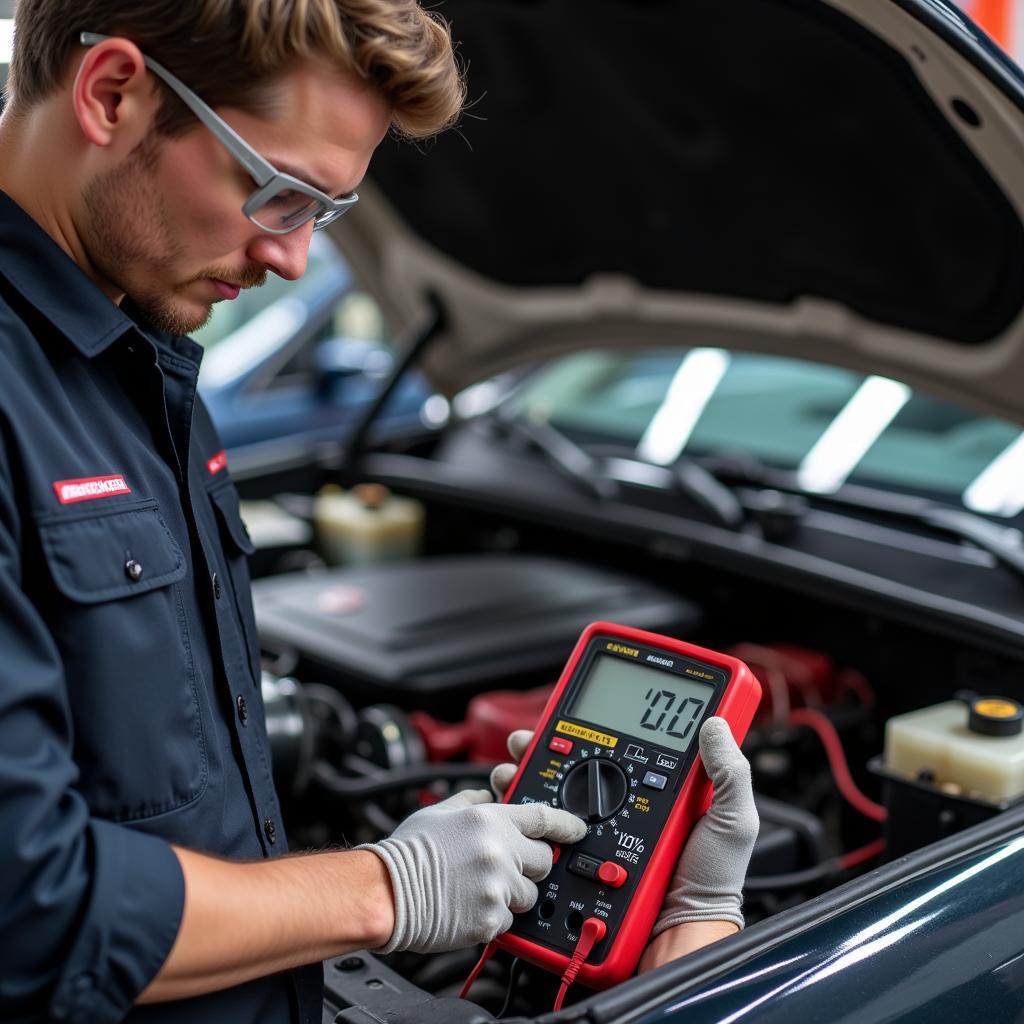If your dashboard lit up like a Christmas tree just before your car decided to take a permanent nap, you’re not alone. Experiencing the dreaded “all my warning lights came on then car died” scenario is a frustratingly common problem. This article will help you understand why this happens, what it could mean, and what steps you can take.
Why Did All My Warning Lights Come On and Then My Car Died?
Several culprits can cause this alarming situation. The problem could be as simple as a loose battery cable or as complex as a failing alternator or a critical computer malfunction. Understanding the potential causes is the first step in getting your car back on the road.
The Battery’s Role
A weak or dying battery is a frequent offender. It struggles to provide enough power to all the car’s systems, causing warning lights to illuminate as systems start to fail. Eventually, the battery gives up entirely, leaving you stranded.
The Alternator’s Importance
The alternator is responsible for charging the battery while the engine is running. A malfunctioning alternator won’t charge the battery, leading to the same symptoms as a dying battery: warning lights and a stalled engine.
 Checking Car Battery and Alternator
Checking Car Battery and Alternator
Faulty Sensors and Wiring
Faulty sensors can send incorrect signals to the car’s computer, triggering warning lights. While this might not directly cause the car to die, it can indicate underlying problems that could eventually lead to a stall. Damaged wiring can also cause similar issues by disrupting the flow of electricity.
The Computer’s Influence
Modern cars rely heavily on computers to manage various systems. A malfunctioning computer, or a critical software error, can cause a cascade of problems, including illuminating warning lights and shutting down the engine.
Diagnosing the Problem
Pinpointing the exact cause requires some investigative work. Start with the basics:
- Check the battery terminals: Ensure they are clean, tight, and free of corrosion.
- Test the battery voltage: Use a multimeter to check the battery’s voltage. A reading below 12.6 volts indicates a weak battery.
- Inspect the alternator: Look for signs of damage or wear.
- Scan for trouble codes: A diagnostic scanner can read trouble codes stored in the car’s computer, providing valuable clues about the problem.
Seeking Professional Help
If you’re unable to diagnose the problem yourself, it’s time to seek professional help. A qualified mechanic can use advanced diagnostic tools to identify the root cause and perform the necessary repairs.
Preventing Future Issues
Regular maintenance is key to preventing future occurrences of “all my warning lights came on then car died.” This includes:
- Routine battery and alternator checks: Replace these components at the first sign of weakness.
- Keeping wiring and connections clean and secure: This prevents corrosion and ensures proper electrical flow.
- Addressing warning lights promptly: Don’t ignore warning lights; they’re trying to tell you something!
“Regular maintenance is like preventative medicine for your car. It’s far less expensive to address potential issues early on than to deal with major repairs down the road,” says John Smith, ASE Certified Master Technician.
Conclusion
The “all my warning lights came on then car died” scenario is often a symptom of a deeper issue. While a quick fix might get you back on the road temporarily, identifying and addressing the root cause is crucial for long-term reliability. By understanding the potential causes and taking proactive steps, you can avoid this frustrating and potentially dangerous situation. Don’t let your car’s warning lights become a horror story; address them promptly and keep your vehicle running smoothly.
“Ignoring warning lights is like ignoring a fever. It might go away on its own, but it could also be a sign of a more serious problem,” adds Jane Doe, Automotive Electrical Systems Engineer.
FAQs
- What should I do if all my warning lights come on and my car dies? Pull over to a safe location, check the battery terminals, and try to restart the car. If it doesn’t start, call for roadside assistance.
- Can a bad alternator cause all the warning lights to come on? Yes, a failing alternator can cause multiple warning lights to illuminate due to low voltage.
- How long does a car battery typically last? Car batteries typically last 3-5 years.
- Is it safe to drive my car if some warning lights are on? It depends on the specific warning light. Some lights indicate minor issues, while others indicate serious problems that require immediate attention.
- How much does it cost to replace a car battery? The cost of a car battery replacement varies depending on the type of battery and the vehicle.
- How can I test my car’s alternator? You can use a multimeter to test the alternator’s output voltage.
- What does a car diagnostic scan do? A diagnostic scan reads trouble codes stored in the car’s computer, helping to identify the source of problems.
“Remember, a little preventative maintenance can go a long way in keeping your car healthy and avoiding costly repairs,” concludes John Smith.

